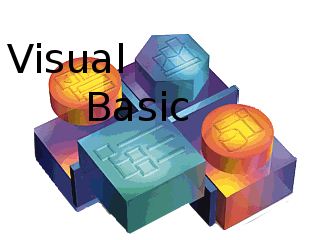BASIC, the first simple language, and Visual Basic
The oldest of the programming languages has experienced several major developments to maintain its popularity, but is now completely overshadowed by languages with C-derived objects .
BASIC was an easy language to learn, and has been a great success for this reason in the past. Currently, Python, Ruby, Script are the easiest languages to use.
If you want to program Microsoft applications with scripts, you need to learn Basic. Similarly, server-side programming in Windows uses ASP, which is a version of Basic.

BASIC was invented in 1964 by Kemeny and Kurtz for use by all. This is defined by the acronym: Beginners All purpose Symbolic Education Code, that is, "Symbolic instruction code for any use by beginners," but it seems that this definition occurs after using a name that meant: basic.
Older versions had line numbers and goto and gosub (subroutine call) instructions on these line numbers.
Bill Gates, along with Paul Allen, created their own version, originally called Altair BASIC, and they won the competition with this software, so Basic was used for a long time as a development tool for Windows before it was finally replaced with C #.
The interpreted version was widely used with the first personal computers, including Integer Basic (from Wozniak) and AppleSoft (from Microsoft) on the Apple II, and IBM BASIC (from Microsoft) on the first IBM PC.
Using these tools, you can program in classic BASIC:
- XBasic. Free compiler.
- Free Basic. Another basic compiler close to Quick Basic with additions.
- Gambas. Linux only, open source compiler and interpreter, Qt or GTK-based development environment.
Visual Basic
Visual Basic, created by Microsoft in 1991, is the successor to Basica and QBasic on PC compatibility. It is intended for Windows applications that require event support (such as mice).
Visual Basic no longer uses line numbers to call procedures and is now object-oriented. The language remains easy to use. However, it does not have the power of C++, C #, Go, or Java.
For the .NET environment, Visual Basic .NET (Visual Basic 7) was created - a new object-oriented language. This version is closer to C++ capabilities.
Microsoft's Visual Basic (and C #) compiler, which has become an input open, and operates with runtime Instructor, this provides a new interest in BASIC, as it now allows you to develop applications on any system, including Linux !
Code examples
Show "Hello World!" in BASIC:
10 PRINT "Salut, le Monde!" 20 END
Hello to the world in Visual Basic:
Public Class MyApplication
Shared Sub Main()
MessageBox.Show("Salut, le Monde!", "HELLO WORLD")
End Sub
End Class
Arithmetic operations in BASIC:
10 INPUT "Entrez deux nombres, séparé par une virgule:", A, B 20 LET SUM = A + B 30 LET DIFF = A - B 40 LET MUL = A * B 50 PRINT "Somme ", SUM 60 PRINT "Différence ", DIFF 70 PRINT "Produit ", MUL 80 END
Last updated in August 2014.